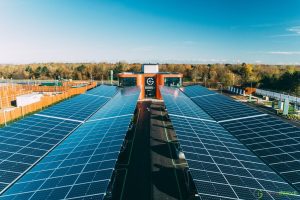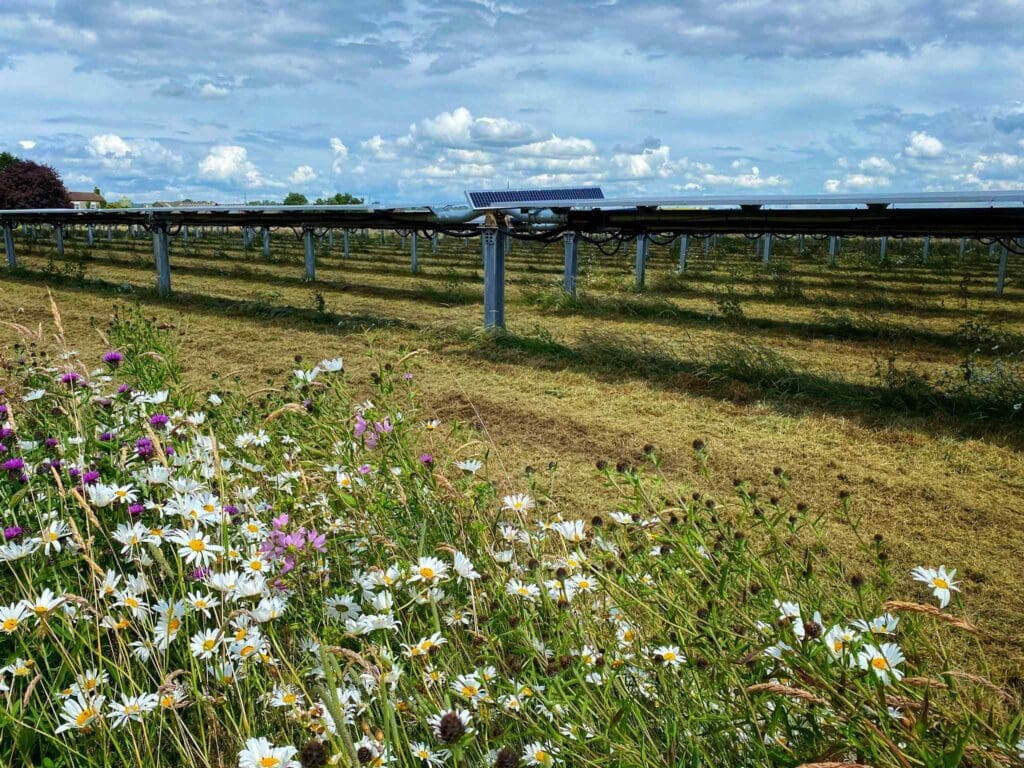

It’s World Environment Day and the UN is encouraging us all to pledge action to reverse the loss of some of the world’s most fragile ecosystems under the hashtag #GenerationRestoration. Days like this really help to raise awareness for issues that matter and that we want to make a more permanent fixture on the climate change ‘to do’ list.
Cool. But how do solar farms fit into this?
Research by the University of Lancaster has concluded that “if deployed and managed strategically, solar farms can offer unique opportunities to enhance the local environment and benefit biodiversity”1. We agree. If 1 MWp of solar energy can be generated on a plot the size of two football pitches, there remains plenty of space in between the rows of solar panels to give nature a helping hand. In fact, GRIDSERVE mandates that every hybrid solar farm it develops must deliver a minimum 20% net gain in biodiversity. If we can’t make this happen, then the project doesn’t get the green light.
When you say helping hand, does that mean you’re planting stuff?
Yep, but only plants that are native to the local area. UK-sourced wildflower seed, for example, is great for pollinators and can be managed with a ‘hay’ cut in late summer, when the flowers have gone to seed. Our hybrid solar farms are often constructed on former agricultural land, which could have had a history of intensive, monoculture farming. Like anything that’s been working a bit too hard, soil needs a holiday every now and then, and repurposing the land for other means, like making clean energy with solar, gives soil that precious time out.
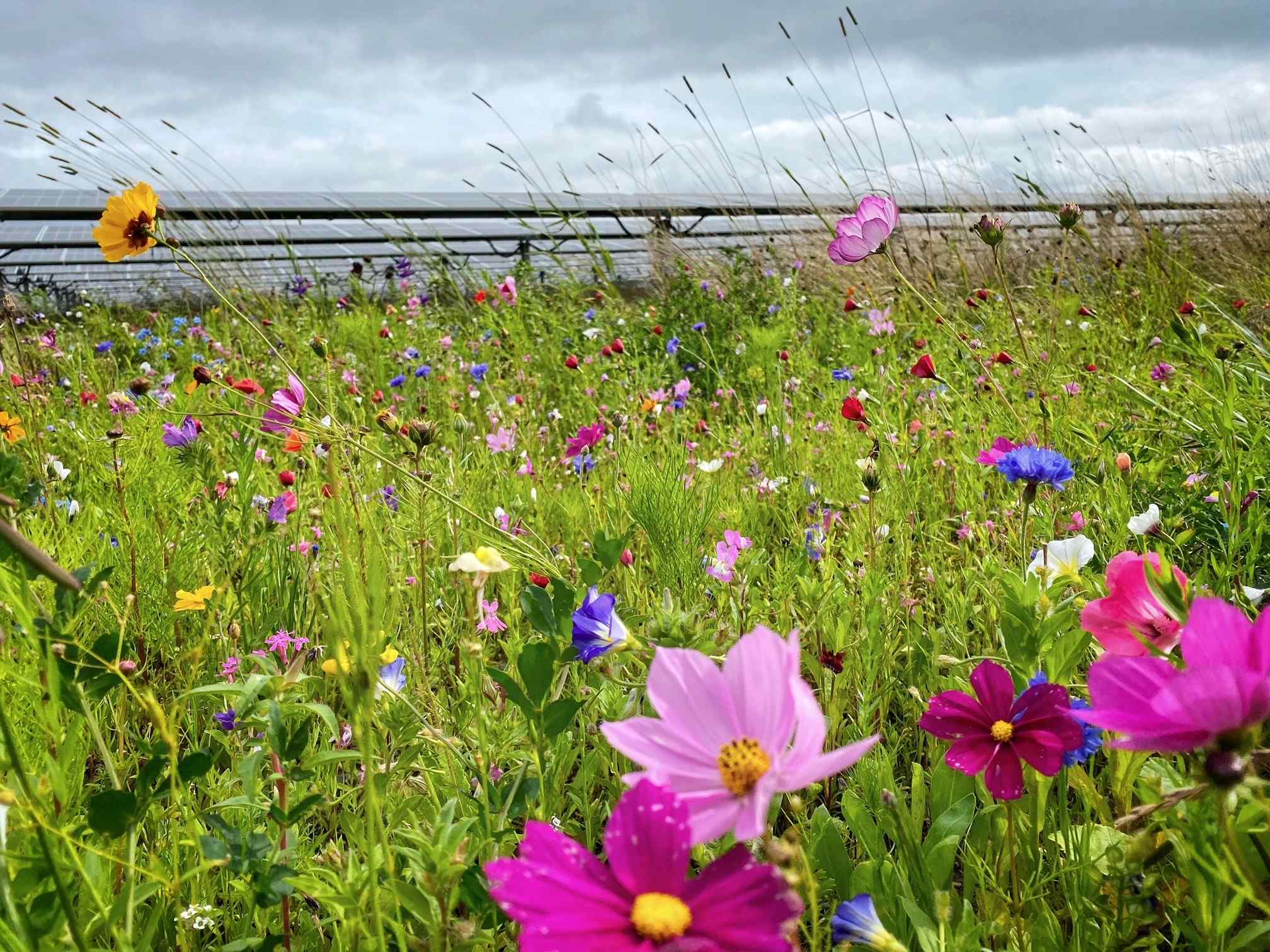
Guessing healthy, happy soils make healthy, happy plants?
You guess well. Soil is an amazing carbon store in its own right, and the most biologically diverse material we know. Combined with plants like floodplain meadows, it also has a significant role to play in slowing down the movement of water into our rivers and reducing flooding downstream.
Wildflower meadows are SO pretty
Also true, but did you know they’re buzzing with insect life? It’s like stepping into the most incredibly rich nature hotel for flora and fauna. Just one square metre of chalk downland can support 40 plant species and a typical community of meadow plants is able to provide food for 1,400 invertebrate species.
Even the hay that’s produced from these species-rich meadows is better for feeding livestock than a typical monoculture of ryegrass. It’s a bit like why you and I would feel better enjoying a varied diet with a broad range of nutrients, as opposed to just eating crisps.
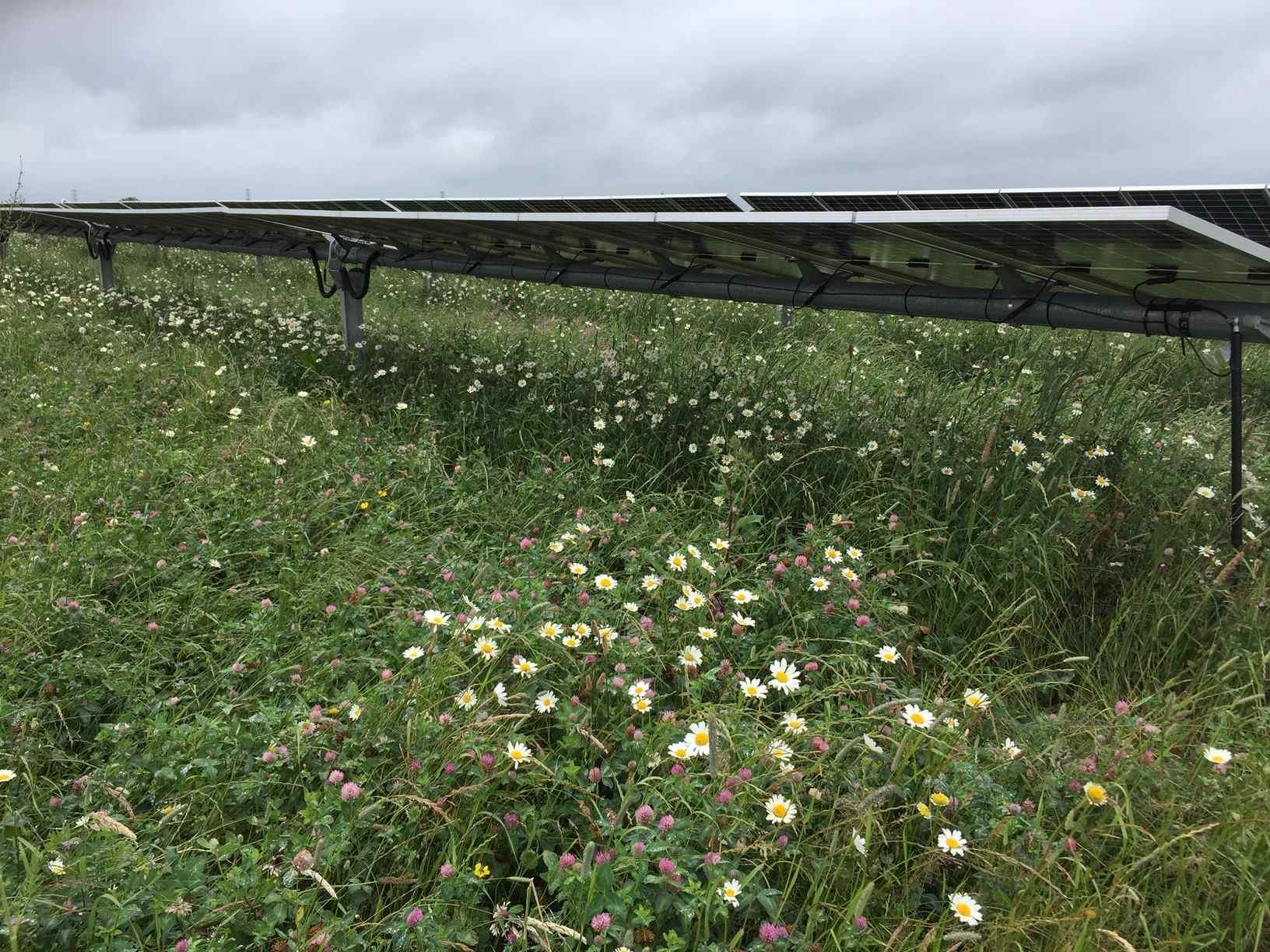
How bad is the lack of biodiversity in the UK?
Bad. An astonishing 97% of wildflower meadows have been lost since World War II, mainly to what is termed ‘improvement’ – adding fertiliser and herbicides to improve agricultural yields.
Also, one of the main drivers of the decline of our bee species – and pollinators in general – is that so much of our countryside is given over to single-species fields of wind-pollinated crops – wheat, barley, oats – or grass for grazing. The only major crop that produces insect-pollinated flowers is oilseed rape, which has a very short flowering season early in the year. Pollinators rely on a steady supply of pollen and nectar throughout the season, and that’s what our hybrid solar farms are trying to support.
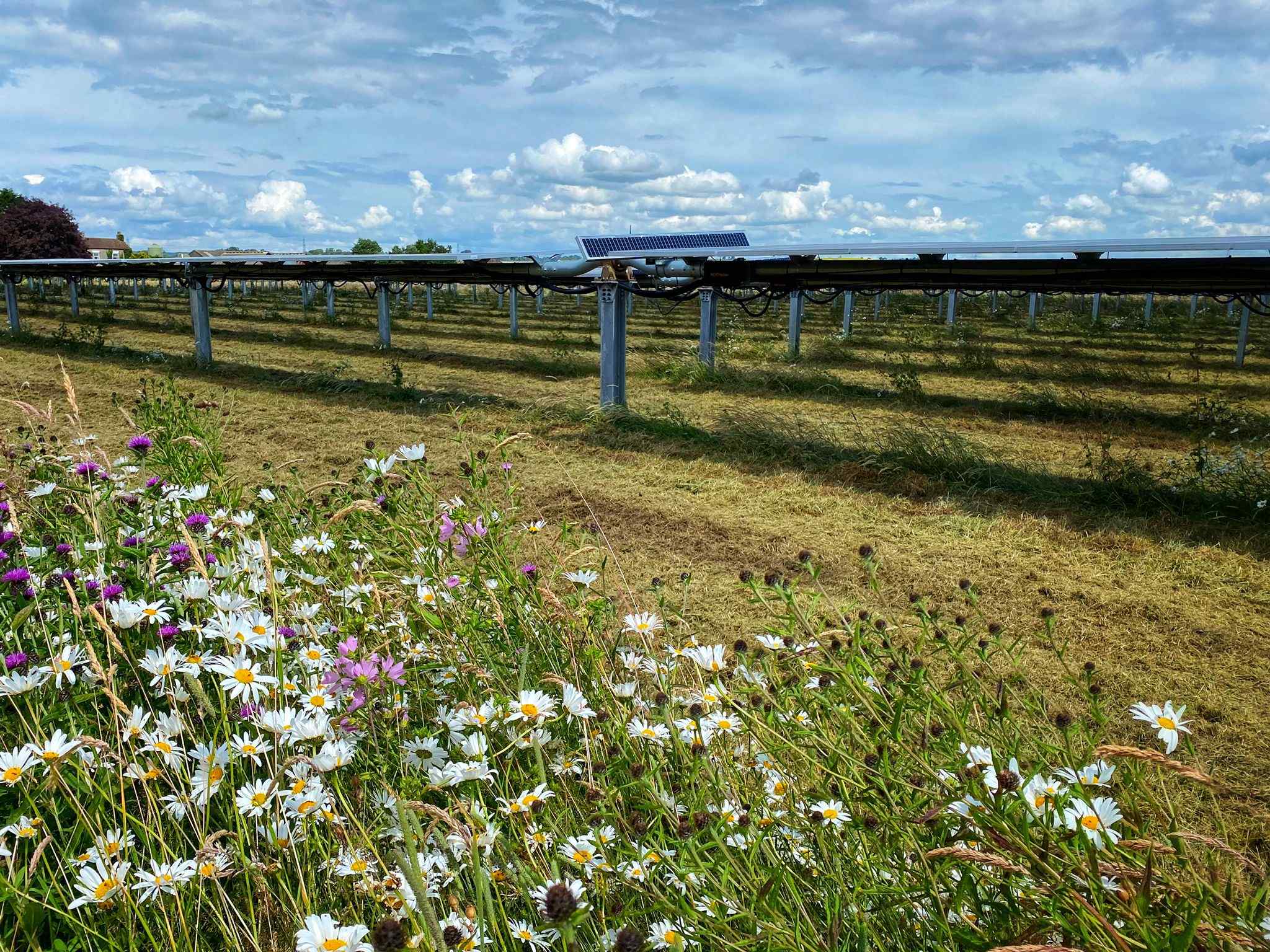
OK that doesn’t sound great. What can I do to help?
Thanks for asking. You could buy a packet of native meadow seeds and sow them or try easing off on the mowing of your lawn and see what species spring up. The wildflowers in our lawns will happily flower through until August, the time when farmers would traditionally have cut for hay. Through some relatively small changes, we can all be part of the effort to conserve more of our meadows and let nature flourish.
Steve Alton is a Biodiversity Nature Sanctuary Manager for GRIDSERVE
References:
1. University of Lancaster: Opportunities to enhance pollinator biodiversity in solar parks – ScienceDirect


